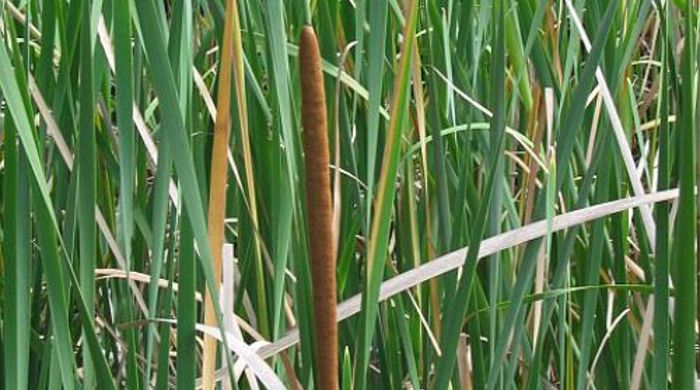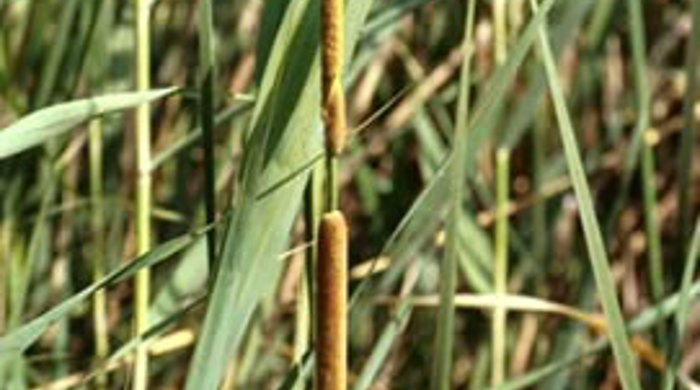Typha domingensis
Southern cattail
Family: Typhaceae
Origin: Cosmopolitan
General description
Emergent rhizomatous perennial herb < 6 m tall. Leaves are alternately arranged in two rows up the stems. Flowers are borne in erect brown cylindrical spikes usually < 2 cm in diameter. Achenes attached to hairs.
What you need to know
To help protect our environment, you must not breed, distribute, release or sell southern cattail. As southern cattail is an Unwanted Organism, these restrictions apply within the Auckland region and across the whole of New Zealand.
Habitats
Wetlands, riparian margins, estuaries, ditches.
Dispersal
Seeds dispersed by wind, water and attachment to animals. Vegetative spread from rhizomes. Human-mediated dispersal through movement of contaminated clothing, soil and equipment.
Impact on environment
Can form dense infestations and displaces native species such as raupō.
Control
Site management
Consider engaging a pest plant control operator to control large infestations. Follow up treated areas each year.
Recommended approaches
Physical control
Method: Dig out.
Plant parts requiring disposal: Seeds and rhizomes.
Disposal options: Remove to greenwaste or landfill.
Biocontrol
Biocontrol is currently not available for this species.
Community agrichemical control recommendations
Certified Handler/Experienced agrichemical user: For small infestations on terrestrial sites, foliar spray with 100ml glyphosate green per 10L of water and 20ml penetrant in spring and summer.
Caution: When using any herbicide or pesticide please read the label thoroughly to ensure that all instructions and safety requirements are followed.





